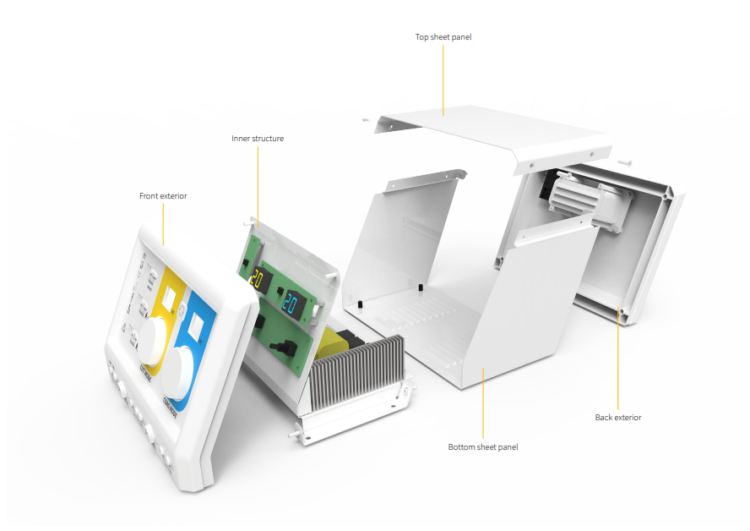Empowering the accessibility of safe global electrosurgery
ongoing
Master thesis by Koen Ouweltjes

Msc. Roos Oosting and the Global Health Design Lab initiated development of affordable and high-quality electrical surgery units (ESU) as a step towards improving surgical care. The ESU is used as an operating tool to assist the surgeon for a high variety of essential surgical procedures. The ESU consists of a high frequency generator with an interface to adjust power settings, a return electrode and an a monopolar handheld that is used to perform the surgery. The main advantages of electrosurgery for low and middle income countries (LMICs) settings is that it is widely applicable, helps to stop and prevent bleeding, allows for precise cutting, facilitates better wound healing in less hygienic environments and has a valuable contribution to time efficient execution of surgical procedures.
A few low-end devices exist that—due to their stripped down, fully analogue and simple design— do not fully meet the demands that are needed for safe global usage of the ESU. As a result, the devices are used inappropriately and this can have serious clinical consequences for the patient, even more in low-resource settings like sub-Saharan Africa (Oosting, 2018).
The design goal of the project has been the development of a reliable, safe and intuitive user-interaction with the ESU system and a tailored design for maintenance in a variety of use-contexts in LMICs. The new design of the electrosurgery unit should be understandable for all electrosurgery users, thus surgeons with limited electrosurgery experience as well as specialists and surgical assistances.

The developed ESU system is designed to capture the primary needs and functionalities to perform surgery according to the 15 essential surgeries stated by the World Health Organization (WHO). These functionalities have been integrated in a safe and intuitive user interaction with both the high frequency generator as well as the monopolar handheld.
For situations where existing equipment and devices cannot fulfil the unique needs of LMICs, the process of designing tailored solutions should involve extensive consultation with end-users, as this is critical to promoting correct device use and protecting patient safety (Ng-Kamstra, 2016). Consequently, substantial qualitive research has been done by interviewing 15 Dutch surgeons that work or have worked in developing countries. This created an holistic framework on the user-interactions and barriers with the electrosurgical unit prior, during and after a surgical procedure and legit assumptions on required functionalities in use and sustainable maintenance prior to designing.
The developed concepts have been extensively tested with the intended target group by means of an explorative study in Kenya. Even though the developed ESU system requires future improvements to create a sustainable success, the designed system empowers the future accessibility of electrosurgery for LMICs. The ESU system increases safety and an intuitive user interaction concerning the limited electrosurgery experience and enhances reliability for maintenance in the variety of use contexts in LMICs. The developed trade-off has shown the great potential this designed ESU system can have on global surgery. Hopefully, this ESU system can in all sincerity make global electrosurgery accessible for everyone and everywhere.
You can read the full thesis report here.